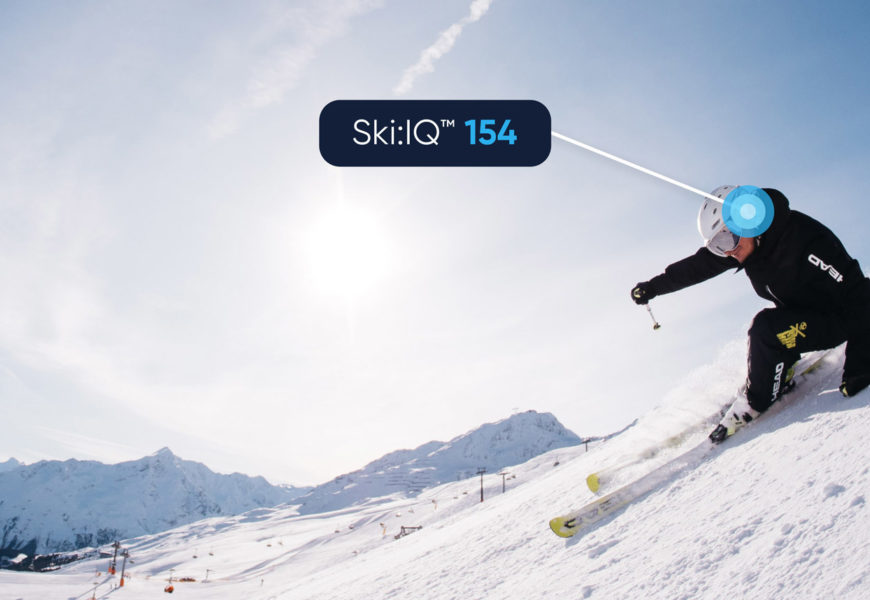If you already track speed and vert, you'll love Ski:IQ
Votes:
It’s a common workplace refrain that what you measure is what you get. Because when we set quantifiable goals and track our progress, we create motivation.
Until now, as skiers, all we've had to measure ourselves by are the different types of terrain we can get down. That's why we're so motivated by accomplishing new terrain objectives. We all start on greens, then it's a pretty exciting day when you can ski reds and eventually blacks. The braver among us will then set our sights on mastering moguls, tree runs, and powder.
There hasn't been much else out there to track which is why the data-enabled of us commonly turn to tracking speed and vert. But speed doesn’t equal skill, and total vert doesn’t always indicate the quality of our day.
With Carv, wanted to find a way to use data to create motivation and a tool to improve. The system is grounded in data, but we've worked hard to create tool that doesn't just track your day, but actually makes it better.
In this article, we will dive into our philosophy for the Ski:IQ system and show you why tracking technique will lead to a noticeable impact on how you ski.
PS. you can still track speed and vert with Carv :).
Ski:IQ - the most powerful tracking tool in skiing
The biggest challenge in creating Carv has been deploying our data to get instant, accurate measurements of how you ski. Our system has to be accurate, understandable, and aligned to known coaching concepts that you can use to improve. With all of our data, we could create a black-box algorithm that scores you very precisely, but you wouldn't know why you got that score, or how to improve.
So we spend a huge amount of time and energy thinking about how to break down all the components of a perfect ski turn into one accurate score: Ski:IQ - giving you something to track and optimize against every day you go on the mountain.
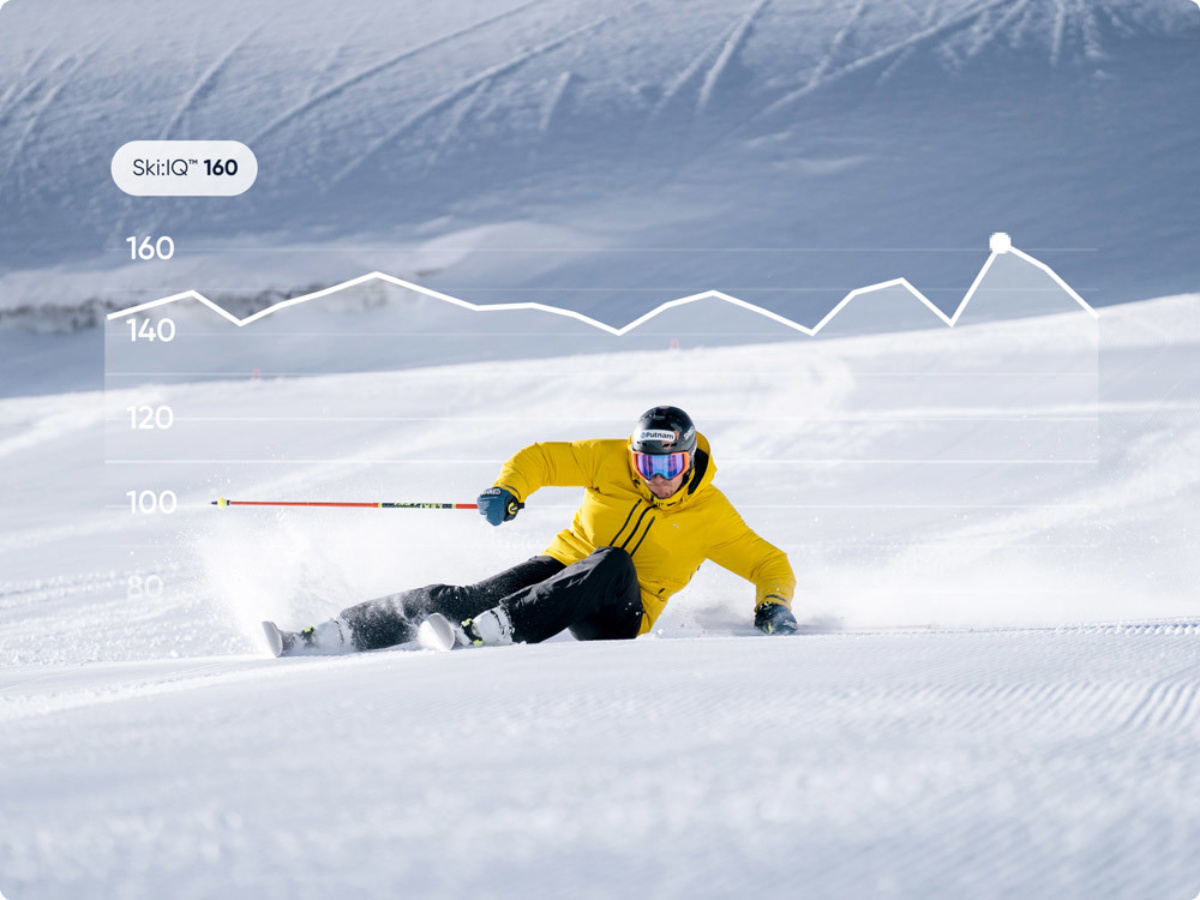
Ski:IQ is calculated on every turn, but your receive a single Ski:IQ score for each segment of a trail that you ski.
Carv Ambassador and 5x world champion, Ted Ligety.
Carv's metrics - the building blocks of Ski:IQ
Ski:IQ isn’t an arbitrary measure of performance. It’s built to asses the fundamental skills of a great ski turn.
- Balance,
- Edging,
- Rotary,
- and Pressure.
Each skill is referenced by ski associations around the world and will be familiar to most skiers. However, sitting underneath the 4 areas are Carv's 13 metrics.
This is where the Carv data really comes into its own. We use our pressure and motion data, measured 20 times a second, to assess specific components of technique that any skier can target and improve.
An example is edge similarity - are you rolling your skis in unison when you start the turn, or are you 'stepping' your skis together?
By breaking your score down to this level, we can show you exactly what's holding you back - so you can understand it, practice it, and improve it.
Our system is built to ensure that by improving your metrics, your Ski:IQ will go up. You will become a better skier and you will get more from each day on the mountain.
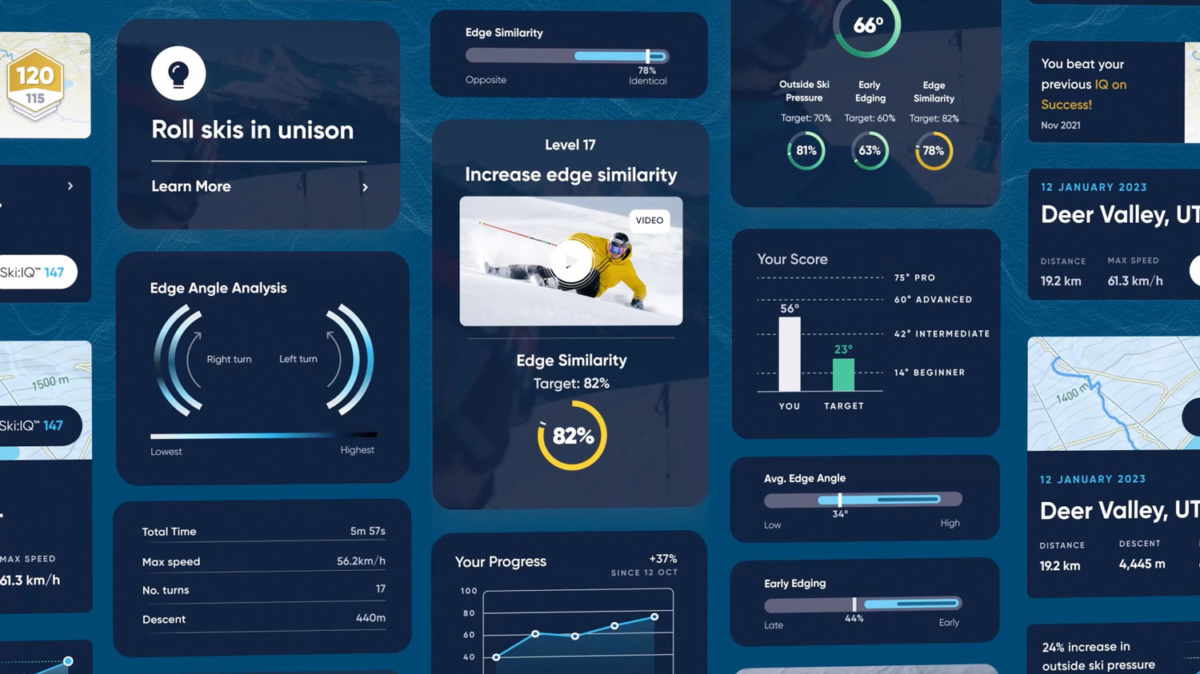
If I start optimizing for Ski:IQ, what will happen to my skiing?
Carv has been designed to drive you towards an efficient and balanced form. This means that if you improve your Ski:IQ, you'll be improving your fundamental technique. We have built the system using data on piste, but by improving your fundamentals on piste you'll also find it easier to:
- keep your form on other terrain like powder, bumps, and trees.
- ski for longer without getting tired
- reduce the chance of injury
It's important to note that Carv is still going to give you your highest score when you're making a dynamic turn on the piste. But this summer, we've been developing automatic terrain detection to recognize and reward your score when you move into more challenging conditions.
The really powerful part of the metrics system is its flexibility.
Carv is looking to discover metrics that are consistently holding you back from getting a higher score. It's assessing you against expected values from other skiers of your level and deciding which metric is the right one for you to focus on.
For example, beginners are likely to struggle to stay balanced over their bindings during the turn, whilst advanced skiers might be used to creating high edge angles but not holding them throughout the turn. Carv will identify both cases and serve the right metric and advice based on your level.
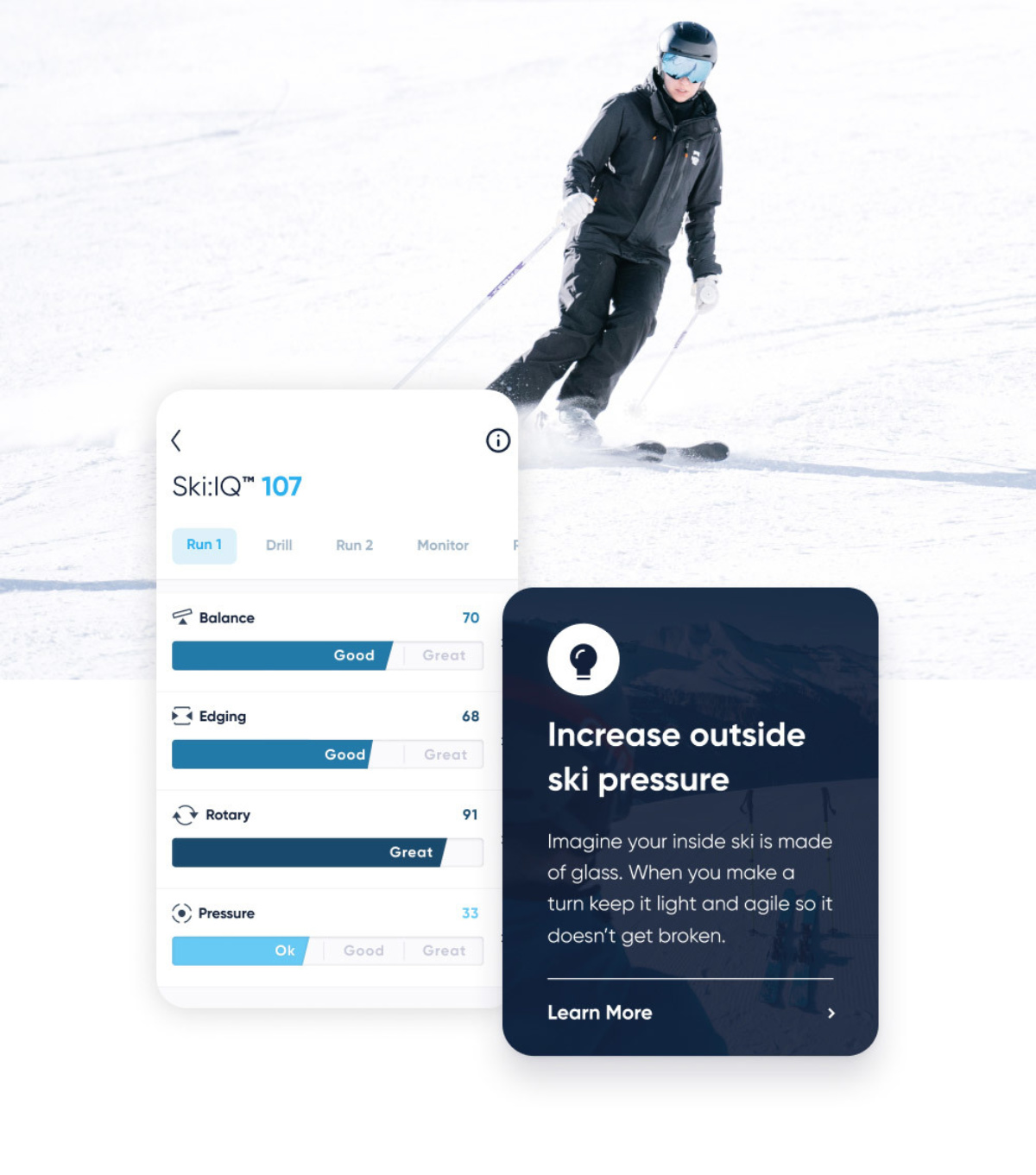
Your Ski:IQ and skills scores drive your recommended coaching area - which is how the system adapts to your level.
Only the best skiers in the world can control all these elements of their technique at one time. So if you think you're pretty good and can get down anything - you'll still get value from Ski:IQ.
You might not be transferring your pressure early enough to the outside ski, or you might not be rolling your skis on edge as early as the top skiers. By focusing on that skill you'll find a breakthrough that transforms how you ski for the rest of your life.
The progressive edge metric (new for 2023) measures how you roll your skis throughout the turn - rewarding advanced skiers who hold a tight arc for longer.
Turning tracking into technique improvement
Carv identifies the metric you should focus on, sharing them with you at the end of your ski day as your Personalized Focus Area. This skill will have the biggest impact on your Ski:IQ - compared to skiers of your ability level. Carv will explain why this metric is important, and how your performance compares against where you should be for your level. You’ll also be shown a graph for the metric’s performance over time, so as you continue working on your focus areas you’ll have a clear log of your improvement.
We’ll then recommend a drill, exercise, or challenge to try the following ski day to help improve this focus area. Or, you can dive into the library of training videos in the app. Some Carv Members decide to share their metric insights on the Skiers’ Community on Facebook or with their coaches to maximize improvement.
To know exactly what score you should be aiming for each metric, Carv calculates a Metric Target Zone - based on your performance on that metric compared to the performance of other skiers at your level. They’re based on our data set of millions of turns - so you can trust that you’re aiming for a challenging performance level, but within your grasp.
Through Metric Target Zones and Focus Areas, we break down the data into bite-sized chunks that pack a punch, so that you’ll be competing against your past performance in a meaningful way.
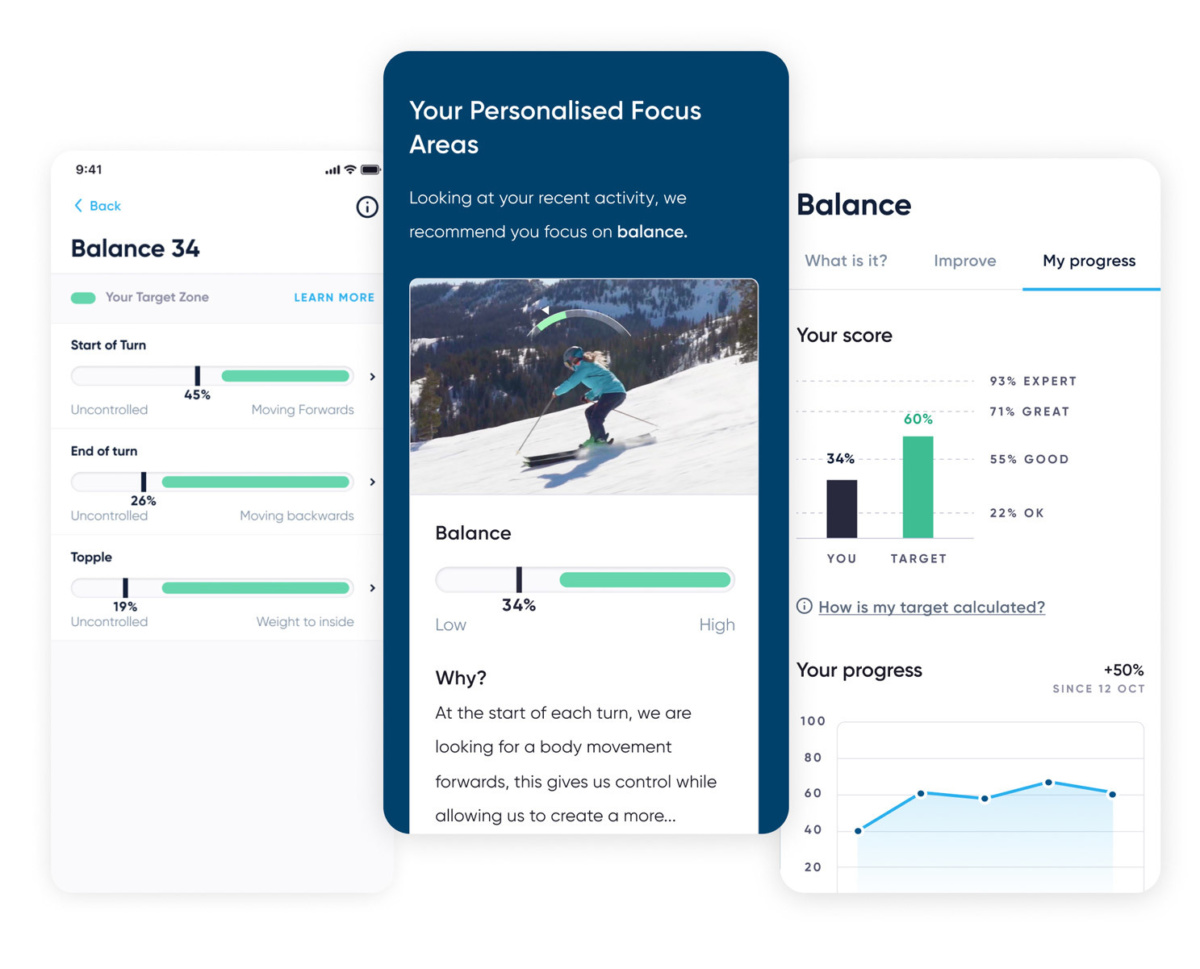
Track your focus metric against your personalized target area - based on other skiers like you.
Compete against yourself, or the mountain
The Carv Leaderboard ranks Carv skiers by Ski:IQ - the top spots held by world-renowned skiers like Ted Ligety, and some of the best instructors out there. The only way to climb the leaderboard? Work on those focus areas and nudge up your Ski:IQ.
But it's not realistic for most of us to take on the pros. That’s why we went local and introduced Resort and Run-level leaderboards last season. In the Resorts Tab, you can track your ability level over each resort you’ve skied - analyzing where you hit the high scores.
Be motivated to “own” a run, King of the Hill style, and top its specific leaderboard. Keep owning runs, and you might even top the leaderboard of your local resort.

In short...
In today's world, we now track our sleep, our running, and even our blood sugar. Tracking our skiing with data isn't a new concept; logging our speed, vert, and ticking off a new run type are awesome moments.
However, tracking our technique can actually make us better skiers and redefine our limits on snow. And that is is a pretty exciting idea.
So get out there and start pushing up your Ski:IQ.


